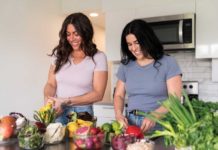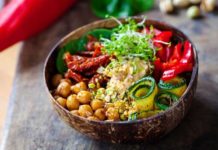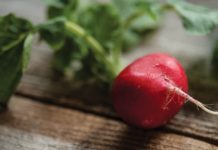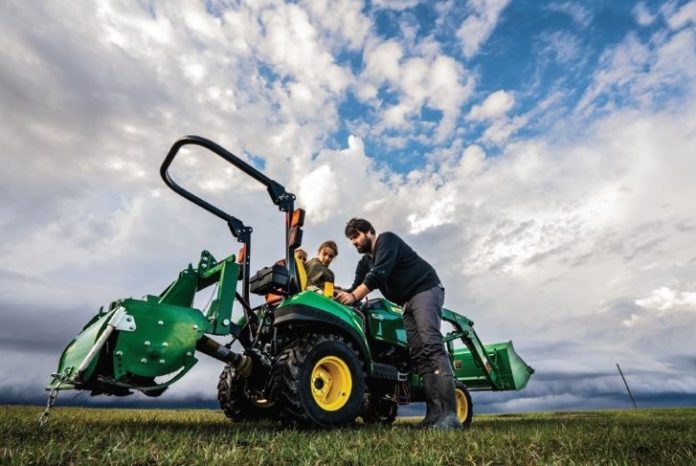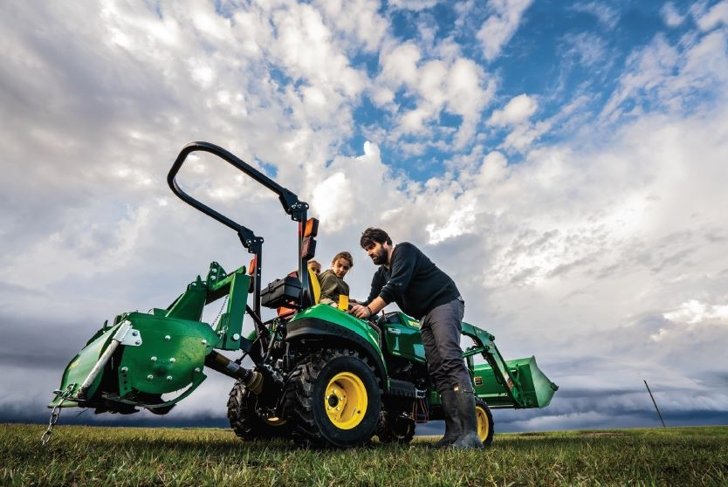
Travis Heide isn’t afraid to take risks.
In the early 2000s, Heide took his newly minted business degree from the University of Saskatchewan to Calgary to work in commodity trading before starting his own grain trading business. It was a good gig, but Heide, who grew up in small-town Saskatchewan, longed for more face-to-face interaction. Grain trading at the time was largely work done by telephone, email, and even fax.
Landing on real estate
So Heide invested in real estate development in Calgary’s Lower Mount Royal neighbourhood. Not only was the work more personal, but it also allowed him to be creative.
“But then the stock market collapsed, and you know, it was like the sky was falling,” Heide says. “Land got cut in half in value. Everyone was afraid to purchase a piece of real estate.”
Planting opportunity in Africa
That’s when he was presented with his next prospect. Heide, guided by his faith to serve, headed to Africa in 2011 to start a farm in South Sudan and develop a food ration contract for 25,000 people, just as the politically unstable nation was gaining independence from the North.
But one opportunity Heide turned down in the meantime was taking over his parents’ farm in Moosomin, Saskatchewan.
When his father, David, asked his four sons to consider it in 2006, Heide was about to embark on his real estate development adventure. He was also single, so being tied down to the land before tying the knot held little appeal. The profitable conventional grain farm that sustained the family was sold.
Doing the rural/urban shuffle
As the adage goes, though, you can take the boy out of the farm but you can’t take the farm out of the boy. Over the next few years, Heide would help others, including two of his brothers, establish and maintain a living on the land by doing contract farm work during the summer and returning to city life in Calgary over the winter.
It was during the back and forth between rural and urban when he would be asked to take the greatest risk of all: to run what would become Canada’s largest organic farm and one of the biggest on the continent.
Tilling a new challenge
A Calgary businessman investing in Saskatchewan farmland needed someone to break up pasture land to plant grain in late 2013. Heide’s work ethic during the project won over Robert Andjelic and the question was raised, “Do you want to farm that land?” Heide responded, “I’d love to,” he recalls.
With the help of his brother Garret, Heide started with 7,000 acres owned by Andjelic near Waldron, Saskatchewan, and harvested their first wheat crop in 2014. Heide, who had since found his Mrs. Right, was content to grow genetically engineered crops and use synthetic chemicals, like his family had done in Moosomin.
Digging only organic
His wife, Amy, wasn’t married to the idea, however. Growing up on Vancouver Island, organic produce was the default at dinner rather than a rare purchase. Her own strong desire for “healthy and clean eating” didn’t jive with how Heide made a living.
Neither did the high costs of modern agriculture once Heide did the math. Chemicals and treated seeds ate into the farm’s bottom line. Something had to give.
So Heide, 39, began the intensive process of going organic. Today, 75 percent of the 40,000 acres Heide grows with a staff of more than 30—“We’re not a family farm; we’re a farm of families,” he says—is certified organic. By 2020, that certification will cover the entire swath.
Inspiring conversions
Heide’s goal is to inspire others to switch from conventional agriculture—a point that’s made him a bit of an outsider in his community and in his family.
“(Farmers) really do care about people, but there’s so much controversy around this,” Heide says. “I mean, my two youngest brothers are conventional farmers, and you should see the conflict this creates.”
He’s undeterred, though. He sees his work as economic development for rural Canada, and he’s convinced that anyone willing to take a similar risk in their respective corner of the country would have the same effect.
“The money we otherwise would have been spending on chemicals to spray on the land, we’re investing in (hiring) people,” Heide says. “That adds value to the
local community.
“It’s new young kids that are going to schools in rural towns. It’s new women helping out in various businesses in those communities, and it’s houses that are being rented or purchased. It’s vehicles that are being purchased … If we continue to add additional layers, we’re going to be able to bring even more people back to the rural (area).”
All the while, he’ll keep Canadians and the land healthy by producing food the way it was always intended.
“We want to bring people healthy, clean food, and we want to ensure there’s adequate supply. We want to ensure there’s research and trials, and open up new and better.
Techniques for organic agriculture so we can maintain the health of the soil,” Heide says.
“A lot of (farmers) don’t even know how they can go back and do it (organically). And I feel like somebody’s got to act with extravagant courage, and extravagant risk-taking, and very bold desires to show that there is another way.”
Hungry for change
Heide’s mission goes beyond helping conventional farmers see opportunity in organic agriculture. Heide faces the same risks as anyone else working the land on a large scale, and they’re job hazards he’s trying to mitigate for his own livelihood if not for others.
Heide turns out crop after crop of healthy organic grains, yet he struggles to get that food into people’s hands. The reason? A cumbersome value chain that sets farmers and consumers farther apart than ever before.
“There are just so many layers that exist today, right from the guy that grows the food to the guy that buys it from him, and then he sells it to somebody else,” Heide says. “There are just so many steps … to moving these commodities from place to place.”
Combatting the middling effects of the middleman
It’s inefficient and unfair, Heide says. Most buyers don’t offer Heide much more for his organic harvests than they do his conventional farming colleagues for their grains. No one would know that by looking at the price difference on a sack of organic versus nonorganic flour at the grocery store, however. The difference is often as much as $10 a bag, yet that money doesn’t go back to farmers, he says.
Heide is often forced to sit on harvests as he seeks fair pay for his work. He steers clear of middlemen who drive down prices for Canadian organic wheat by as much as 30 percent with the threat of buying grains more cheaply from countries with inferior labour and food safety standards. He refuses to give in to their pressure tactics, despite the short-term financial stress he feels while waiting for an ethical buyer.
“I’m not willing to sell it for a low price,” Heide says. “That greatly impacts an element of viability, especially (among) the new young farmers trying to transition into organic when there’s price instability. They’ve all got a lot of machinery and land payments, and they can’t afford to sit and hold grain for a really long time.”
So he bucks the system by forming direct relationships with food processors, including Nature’s Path, who value sustainability at all points in food production as much as their own bottom line.
One Organic Farm
The key to creating lasting change, Heide explains, is to make consumers aware of farmers’ plights so they’ll demand better of the companies processing and marketing our food.
Barring that, it’s developing and selling his own brand of flour, pancake mix, and cereals made with his grains directly to the public under his One Organic Farm label. Sensing the need for change, even national and regional grocers are showing interest in carrying the line.
“If we’re really here to look after the consumer, what can we do to just get closer to them?” Heide asks.
“As farmers, we’ve got to be cognizant of (consumers) because, essentially, they’re our partners in all we do, even though we don’t interact with them, which is part of what needs to be rebuilt—that bridge between us.”
Ditto for coming together with those unconvinced of organic farming’s merits. Heide plans to host community events at his farm to bring together two camps often pitted as arch rivals in a quest to feed the planet.
“We’ve got to really come together, just like community used to do in the old days … to understand the problems and the challenges and the best ways to resolve them and communicate them,” Heide says.
“To share our learnings with other people is the most important thing, because failure is valuable when it’s properly shared and openly considered and addressed. Even though everyone wants to come and hear our story, we’ve got to be so clear this is a work in progress and we’re learning continuously.”
The weight of the world
Despite being one of the largest organic farmers in North America, Travis Heide copes with the same pressures as smaller producers. One of the biggest issues they face is competition from imports.
Argentina and Ukraine, where production costs are cheaper, are two of Canada’s biggest competitors in organic wheat. In 2015, for example, it cost about $190 to produce a tonne of wheat in Ukraine versus $304 in Canada, where everything from storage to shipping is more expensive in comparison.
But consumers can help, Heide says. They can lobby processors to choose Canadian grain over imports and ensure a market for domestic harvests.
Heide also plans to sell directly to consumers when he launches his One Organic Farm brand of products in grocery stores, including hemp, flax, rolled oats, chickpeas, whole grain flour, and other grains and pulses.
Ten percent of every purchase will go to charity: water, a nonprofit organization that provides access to safe drinking water in developing countries.
Going organic
The process for a farm to be certified organic can take years, depending on the crop. Farmers growing fruits, vegetables, pasture crops, grains, oil seeds such as soybean and canola, and forage in open fields or in the ground in a greenhouse can’t use synthetic pesticides, herbicides, or fertilizers on their land and crops for 36 months before certification.
Canadian organic farmers follow the Canadian Organic Standards. These rules lay out how certain crops should be grown; how livestock must be fed, housed, transported, and slaughtered; and how pests and diseases can be treated. The standards are overseen and enforced by the Canadian Food Inspection Agency.
All organic farms in Canada must pass an inspection before being certified to ensure farmers meet standards. Farms are inspected annually to maintain certification.



